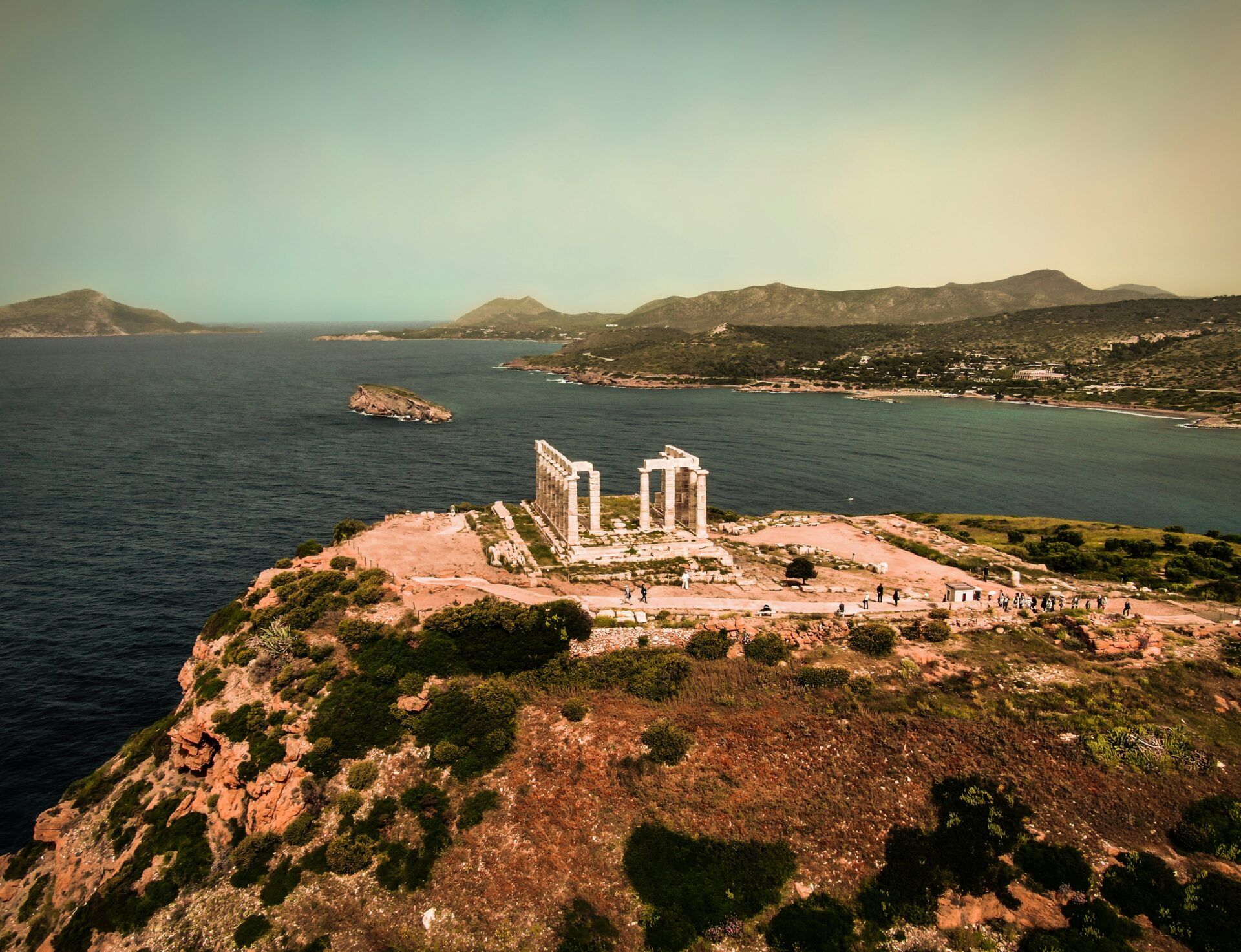There’s just something magical about watching the sun sink into the Aegean Sea from Cape Sounion.
I stood beside the ancient Temple of Poseidon, golden light washing over its weathered columns, and I got totally swept up in wonder.
The temple sits on this dramatic cliff, nearly 60 meters above the sea, and honestly, it might be the most stunning sunset viewing spot in all of Greece.

This experience feels almost sacred, like it connects you to both the wild Aegean and the ancient Greeks who honored Poseidon here.
As daylight faded, the marble columns glowed honey-gold against a deepening blue sky.
I watched the colors shift, minute by minute, painting the ancient stones in warmer and warmer hues.
What really makes this sunset special isn’t just the temple—it’s how the ruins frame the endless seascape.
The ancient Greeks clearly knew what they were doing when they built Poseidon’s temple right where sea and sky collide in perfect harmony.
As I stood there, watching the sun slip below the horizon, I finally understood why travelers have been making pilgrimages to this spot for centuries.
There’s a serenity here that just reaches inside you.
Why Cape Sounion Is the Ultimate Sunset Destination
Cape Sounion delivers one of the most breathtaking sunset experiences in Greece.

Nature and ancient history come together as golden light floods Poseidon’s temple, creating a moment that feels almost otherworldly.
The Geographic Marvel of Cape Sounion
Cape Sounion stands at the southernmost tip of the Attica peninsula, jutting dramatically into the Aegean Sea about 60 meters above the water.
You get an unobstructed 180-degree view of the horizon here, and trust me, nothing blocks your view as the sun makes its descent.
The cape’s elevation gives you a commanding vantage point—ancient Greeks clearly recognized this when they built the Temple of Poseidon.
This strategic spot served as both a sacred site and a navigational landmark for sailors heading home to Athens.
Unlike crowded city viewpoints, Cape Sounion gives you plenty of space to find your perfect sunset perch.
The peninsula’s unique shape means you can catch the sunset from different angles, depending on your mood.
Natural Beauty and the Aegean Sea
The Aegean Sea stretches out endlessly, crystal-clear and blue, making a perfect canvas for the sunset’s golden hues.
I watched the water transform into what looked like liquid gold as the sun dipped lower.
The rugged coastline and wild landscape add dramatic texture to every photo.
Tiny islands dot the horizon, silhouetted against the shifting sky.
On clear days, you can spot several Greek islands in the distance.
The acoustics here are something else.
As the sun sets, you can hear gentle waves lapping at the rocks below, a natural soundtrack that makes the whole experience even more peaceful.
Cultural and Mythological Allure
The Temple of Poseidon stands as a dramatic ancient frame for the setting sun.
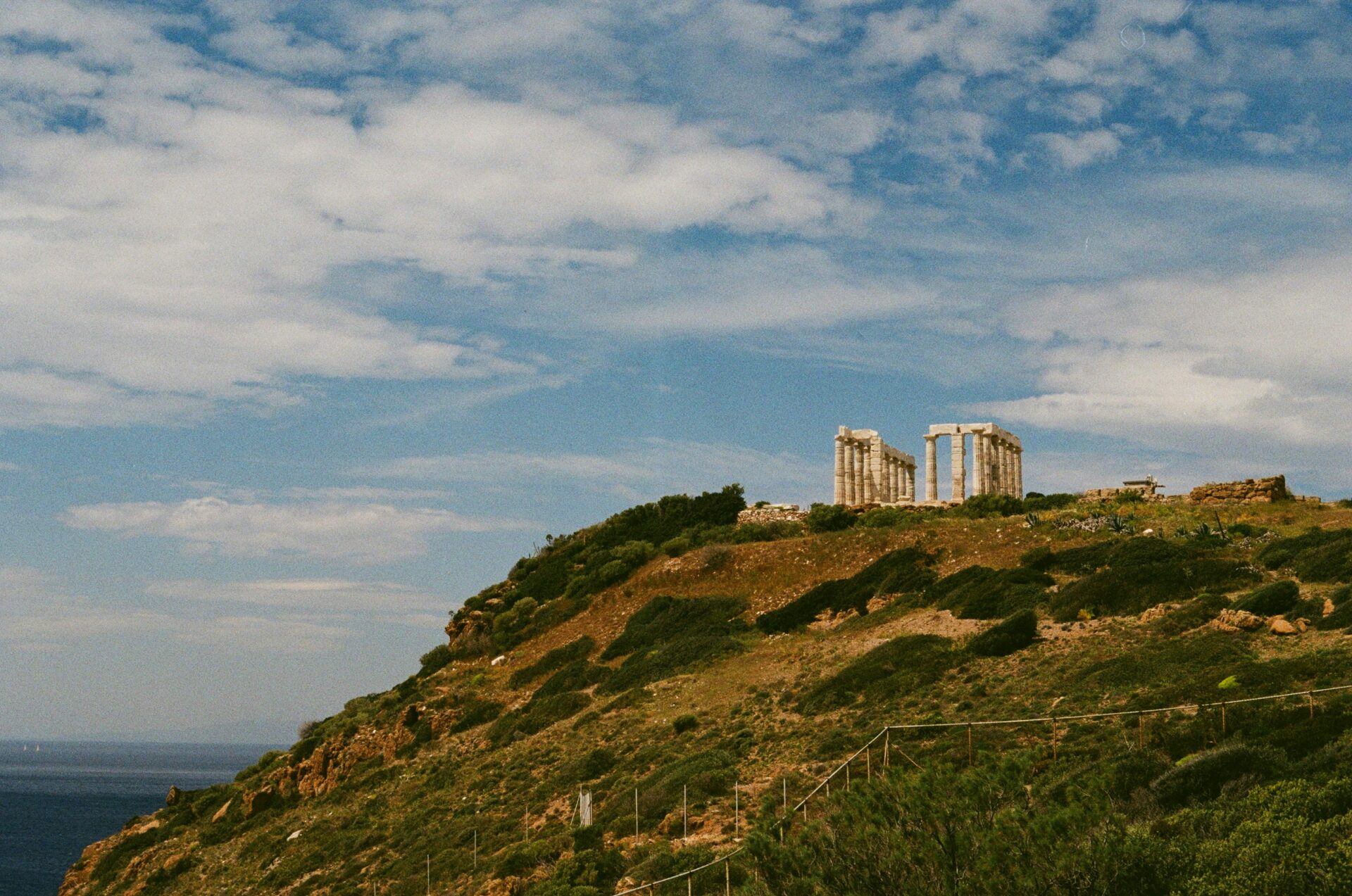
They built it during Athens’ Golden Age (444-440 BC), and these Doric columns have watched thousands of sunsets.
Greek mythology says King Aegeus leapt to his death here, thinking his son Theseus had died fighting the Minotaur.
I felt history pressing in as the same golden light that touched these stones thousands of years ago washed over me.
Famous visitors like Lord Byron got captivated by this place too—he even carved graffiti that’s still visible.
The mythological significance adds another layer.
Poseidon’s temple, overlooking the vast sea, just feels right.
Many people time their visits with specific dates in the Greek calendar that once mattered to the ancients.
Poseidon’s Temple: History, Legend, and Awe
Standing at Cape Sounion, I felt the weight of 2,500 years of history pressing down, while the temple still commands the Aegean Sea.
This place tells stories of ancient worship, maritime protection, and the enduring legacy of Greek civilization.
Origins and Architectural Grandeur
They built the Temple of Poseidon around 440 BC during the Golden Age of Athens under Pericles, replacing an earlier temple destroyed by the Persians.
The architecture follows the classic Doric style, with 34 columns originally—15 still stand today.
What really amazed me was how the ancient Greeks positioned the temple so perfectly on this dramatic clifftop.
At 60 meters above the sea, it served as both a place of worship and a beacon for sailors approaching Attica.
The marble columns glow gold at sunset, creating a magical atmosphere.
Each column rises about 6 meters tall, and the whole structure was designed with almost mathematical perfection.
The temple’s location wasn’t just about beauty—it formed a triangle with the Temple of Aphaia on Aegina and the Parthenon in Athens.
Legends and Mythological Stories
Legend says King Aegeus jumped to his death here, thinking Theseus had died in Crete.
The sea below took his name—the Aegean.
Poseidon ruled the seas, earthquakes, and horses.
Sailors stopped here to make offerings before dangerous journeys, hoping for the sea god’s favor.
I learned about the rivalry between Poseidon and Athena for Athens’ patronage.
Poseidon struck the ground with his trident, creating a salt spring, but Athena won by gifting an olive tree.
In the Odyssey, Poseidon hounded Odysseus for blinding his son Polyphemus, turning the hero’s trip home into a ten-year odyssey.
Standing here, I could almost feel those ancient stories drifting in on the wind.
Archaeological Treasures and Preservation
The temple bears the marks of history, including graffiti carved by Lord Byron in the early 1800s.
That controversial etching connects ancient history to the romantic poets who rediscovered Greece.
Archaeologists have uncovered bronze statues, pottery, and inscriptions here, revealing ancient Greek religious practices.
Preservation efforts now focus on protecting the temple from erosion, pollution, and the steady stream of tourists.
Special walkways and platforms help minimize impact.
The most remarkable treasure isn’t an artifact—it’s the temple’s preservation of ancient Greek aesthetics.
Harmony, proportion, and the relationship with the landscape—these ideas still shine through.
The Greek government uses advanced conservation methods, with specialized technology to monitor and protect the marble from acid rain and other threats.
The Sunset Experience: Emotions, Colors, and Reflections
Watching the sunset at Cape Sounion goes way beyond a simple visual experience.
It’s a moment where nature, history, and human emotion blend into something honestly magical.
A Personal Moment To Remember
I stood among the ancient marble columns as the sky began to change.
All the tension from travel just melted away.
There’s something deeply moving about watching the same sunset that inspired Homer and poets across the centuries.
The waiting is part of it.
I found a quiet spot away from the crowds and just breathed.
The marble feels different to the touch as the sun drops—warmer, almost alive.
My eyes welled up as golden light poured over the temple.
It wasn’t just the beauty, but the weight of time and human connection.
People around me grew silent.
We shared glances—strangers, but united by the beauty and the peace.
The Colors of Dusk: Artistic and Literary Inspirations
The sunset palette at Sounion is something else.
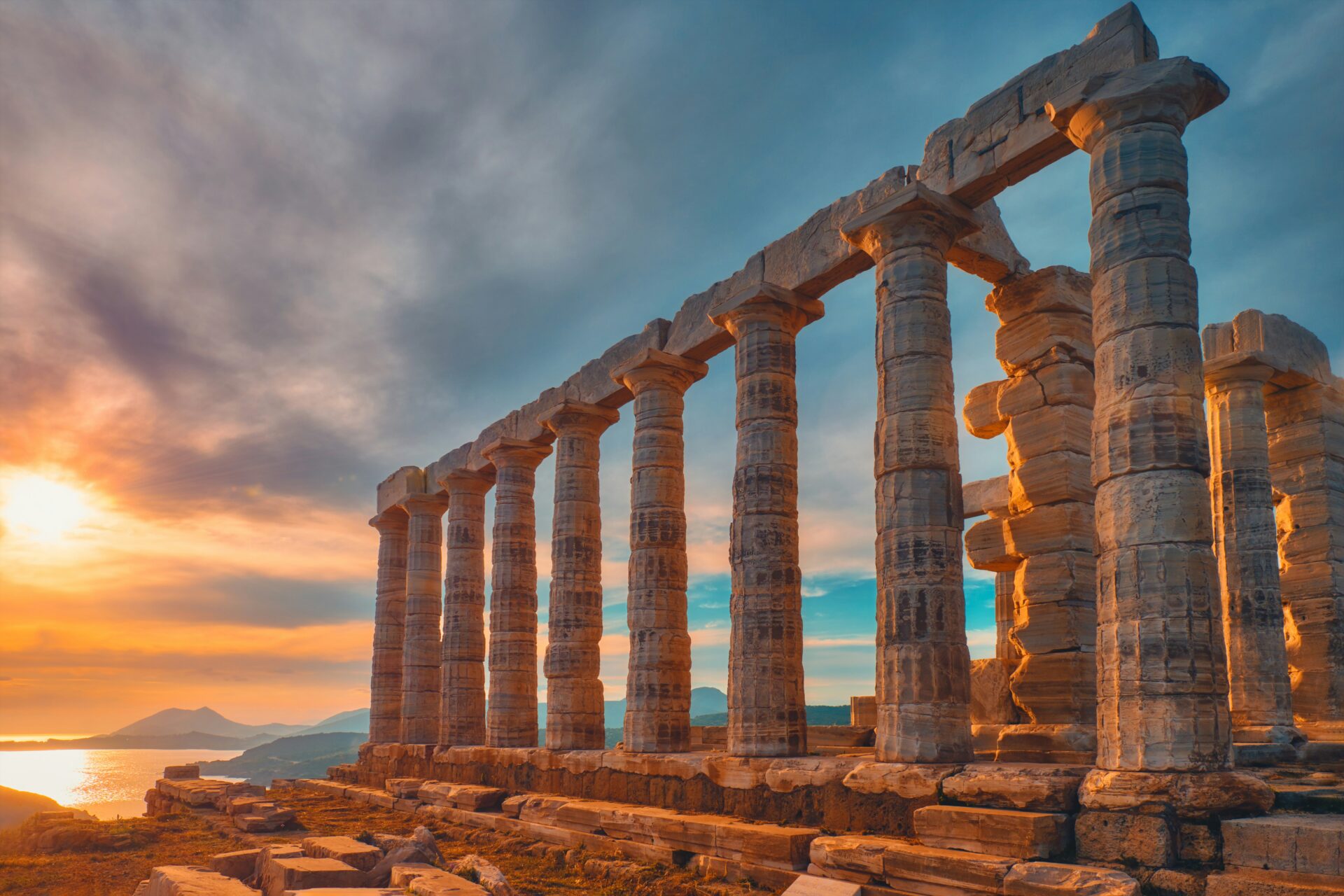
It starts with bright yellows and oranges, then deepens into crimsons and purples.
These colors have inspired a whole anthology of art.
Lord Byron was so moved he carved his name into one of the columns—probably the most famous piece of travel graffiti ever.
The sea below turns to liquid gold, mirroring the drama above.
Photos can’t really capture it—the way the light plays on ancient marble or how the shadows stretch.
Many visitors bring sketchbooks or journals.
I watched an elderly man write poetry as the sun sank.
It just feels like wisdom flows easier in a place like this.
Cape Sounion in Ancient and Modern Culture
Cape Sounion stands as a cultural lighthouse, shining across the ages.
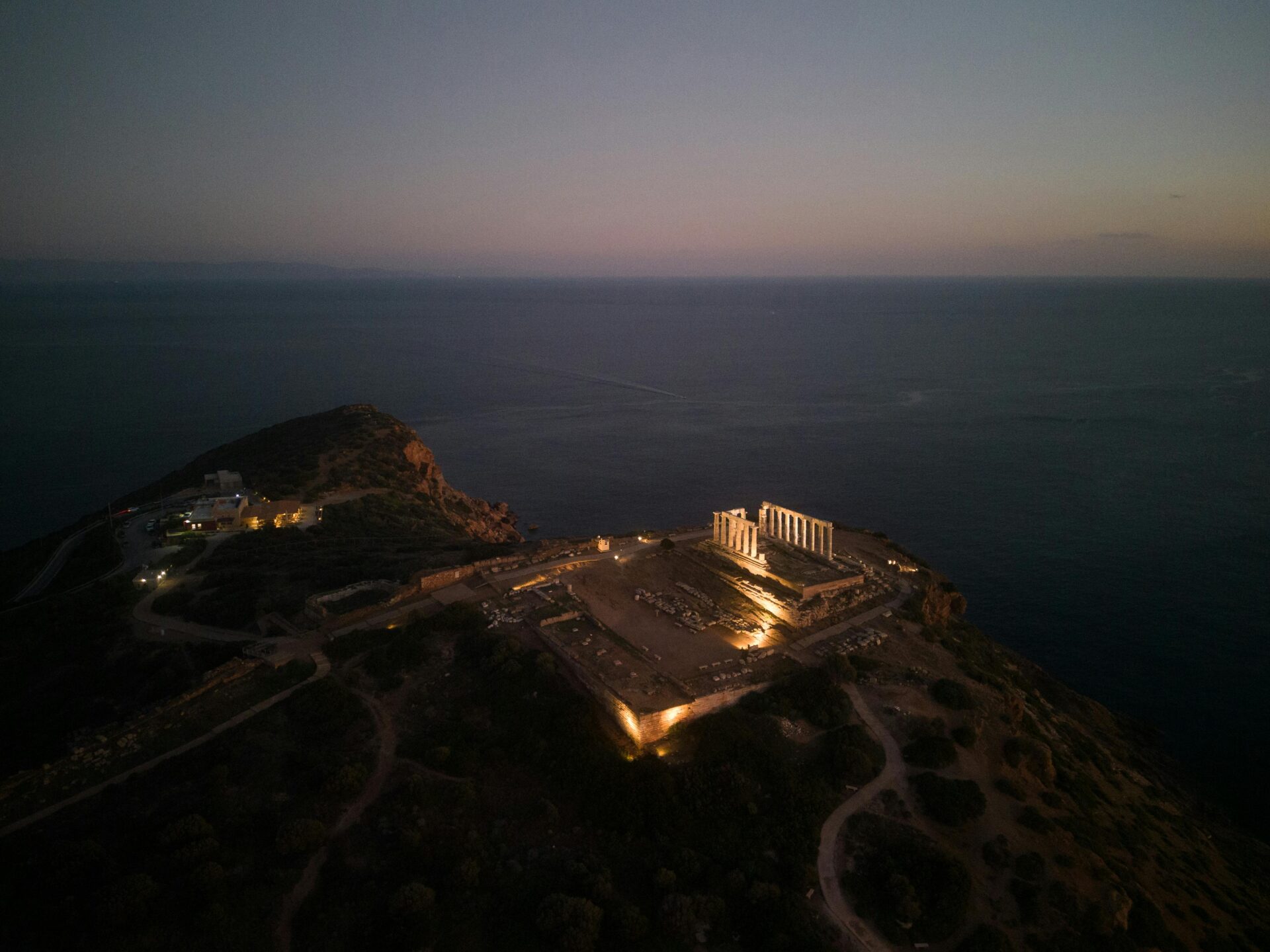
It illuminates both ancient Greek civilization and our modern understanding of it.
The dramatic headland has inspired philosophers, served as a religious center, and still captures the imagination of visitors from all over.
From Ancient Polis to Modern Greece
The Temple of Poseidon at Cape Sounion marked the boundary of the Athenian polis, showing off the city-state’s power and maritime dominance.
Ships rounding the cape knew they were entering Athenian waters.
The temple acted as both a landmark and a symbol of Athenian democracy’s reach.
During my visit, I couldn’t help but picture ancient triremes sailing past, their crews looking up at the gleaming marble columns as a sign of home.
Today, Cape Sounion connects modern Greeks to their heritage and fuels the local economy through tourism.
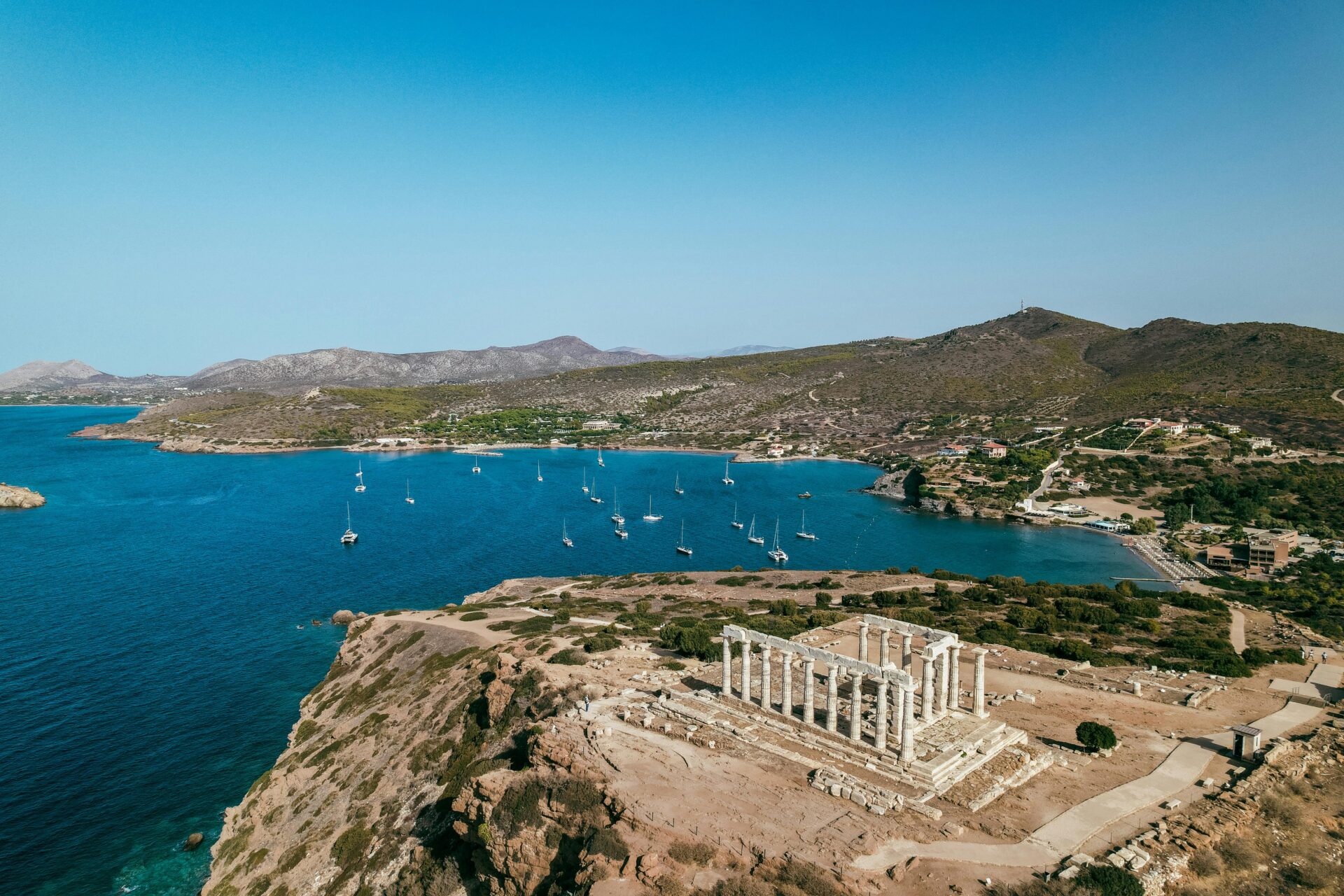
The site shifts from a historical monument by day to a sunset pilgrimage spot by evening.
Athenians make the coastal drive to witness the same view that inspired their ancestors.
Cape Sounion in Greek Literature and Philosophy
Writers and philosophers have long fallen for Cape Sounion’s dramatic setting.
In Homer’s epic poetry, the sea god’s domain gets described with awe.
Later Greek thinkers used the temple’s position—balanced between land, sea, and sky—as a metaphor in their works.
Plato mentioned the cape in his dialogues.
Legend says Socrates pondered life’s big questions while gazing at the horizon from here.
I found ancient graffiti etched into the marble, including one supposedly carved by Lord Byron in the 1800s.
Standing where he once stood, I felt connected to both ancient and modern literary traditions.
The cape still inspires writers and artists today.
You’ll find it in travel narratives, poems, and photographs that try to capture its timeless beauty.
Societal Rituals and Festivals at Sounion
Ancient Athenians held major festivals at Cape Sounion, honoring Poseidon with sacrifices and athletic competitions.
These rituals brought people together and showed the sea god’s importance to maritime Athens.
The quadrennial games at Sounion included swimming and boat races, drawing participants from across Greece.
Religious processions wound from Athens to the temple, with sacred objects and hymns.
During my visit, I noticed echoes of these ancient practices.
Local Greeks still celebrate special occasions at the cape.
Summer solstice gatherings attract people seeking a connection with ancient rituals.
The municipality sometimes hosts cultural events here—music, theater, things that would feel familiar to ancient visitors.
The Theater of Dionysus in Athens might have been grander, but Sounion offered something different—a direct connection between worship and the natural elements Poseidon ruled.
Travel Tips for Experiencing Sunset at Cape Sounion
If you’re planning a visit to Cape Sounion, a little timing and prep can make all the difference.
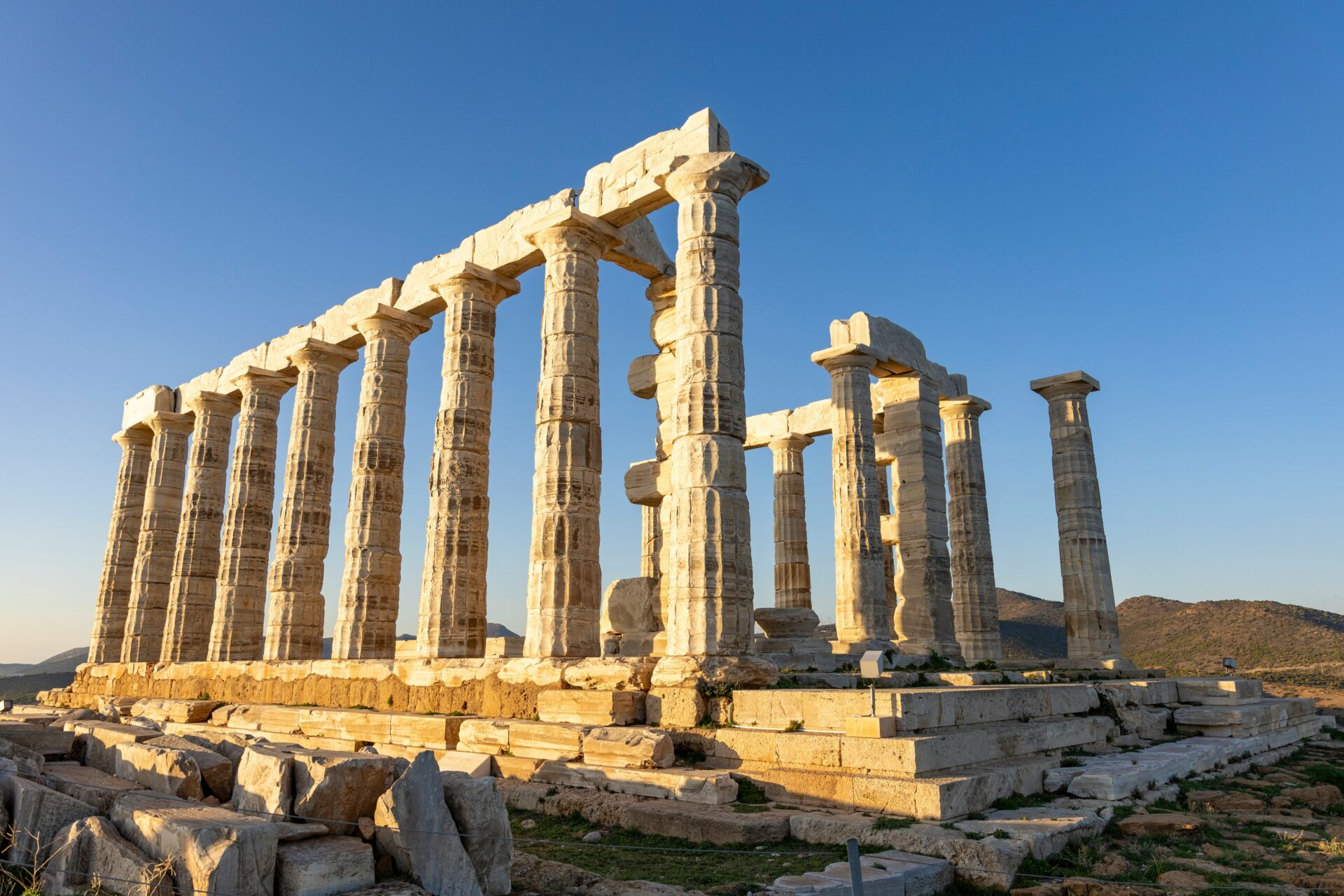
The right approach can turn a simple visit into a magical golden glow experience at the Temple of Poseidon.
Best Times and Practical Preparations
Late spring and early autumn usually bring the best weather for catching the sunset at Cape Sounion. The skies tend to stay clear, and the temperatures feel just right—not too hot, not too chilly.
Check the sunset time before you go, and honestly, get there at least an hour or two early if you want a decent spot. Trust me, the crowds can get intense, and nobody likes standing behind someone tall with a selfie stick.
If you’re visiting in winter, pack a few layers. Those coastal winds? They can really surprise you out on that promontory. I once wore just a t-shirt and, wow, I shivered the whole way back after the sun dipped.
You can catch a public bus from Athens, though the schedule rarely matches up perfectly with sunset. So, what are your options?
- Public Bus: Cheapest, but the timing can be a headache.
- Guided Tour: Super convenient—someone else handles the driving.
- Rental Car: Total freedom; stay as late as you want.
- Tesla Tour: If you want to go green and ride in style, this is a fun pick.
Bring some euros for the entrance fee and maybe a snack or drink. The site closes right after sunset, so keep an eye on the time.
Photography, Artistry, and Aesthetics
If you want to catch the golden hour at Cape Sounion, you’ll need to plan ahead. I always grab a tripod to keep my camera steady as the light fades.
The colors shift quickly, painting the ancient marble in everything from soft honey to a rich, deep amber. It’s honestly kind of magical.
Try standing west of the temple. That’s where you’ll get the best shot, with the sunset glowing behind those iconic columns.
This angle gives you a dramatic silhouette, and the temple just looks so majestic in that light. It’s hard not to stare for a while.
After the sun dips, don’t pack up right away. The “blue hour” comes next, and it’s worth sticking around for.
You’ll see softer, cooler light, and the temple stands out in a whole new way against the darkening sky. It’s a quieter kind of beauty.
If you love to draw, bring a sketchpad along. The place has inspired artists for centuries—Lord Byron even carved his name into the marble (though, honestly, I wouldn’t suggest doing that).
There’s just something about the atmosphere here that gets your creative side going.

